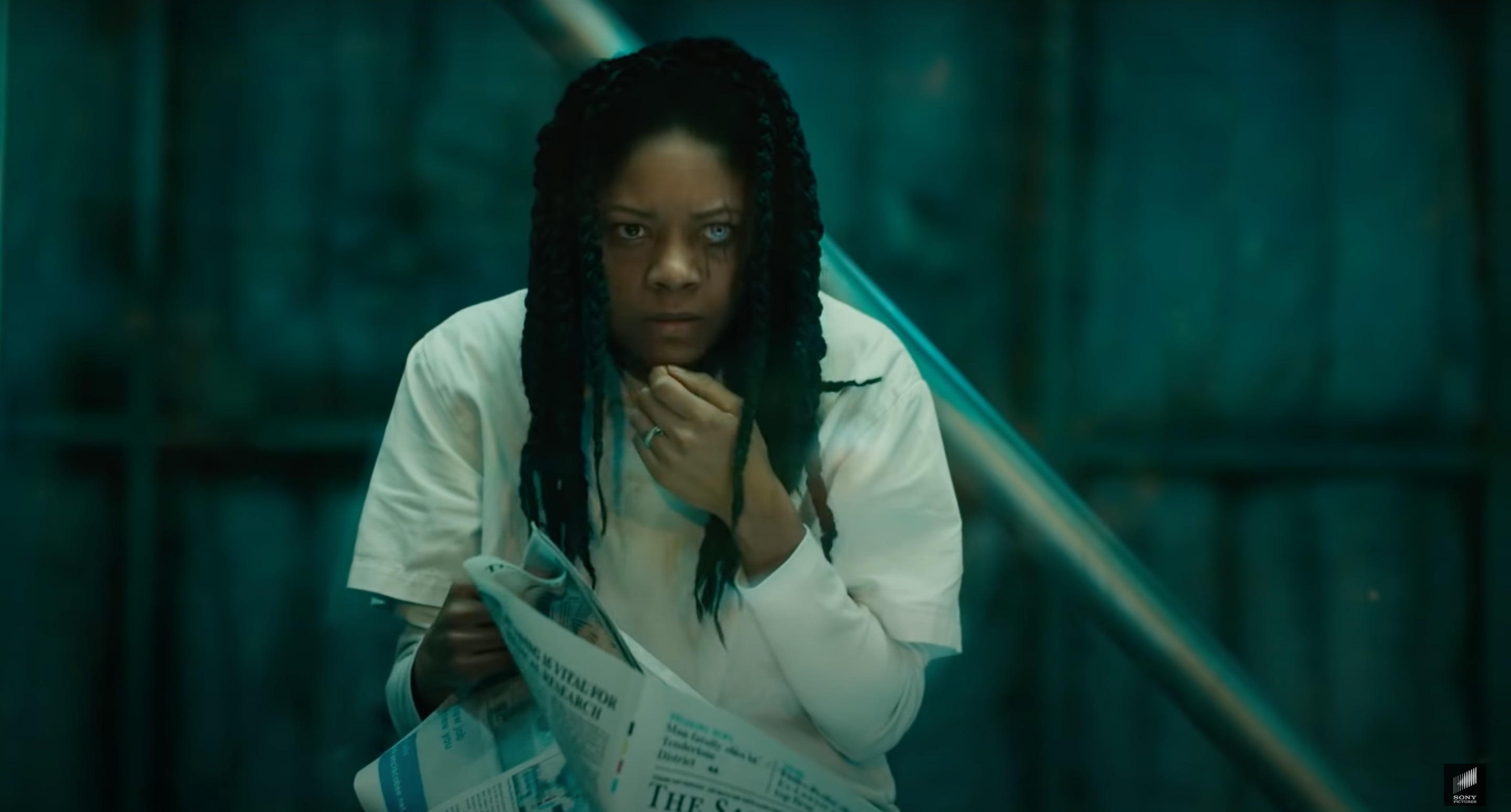Create a free profile to get unlimited access to exclusive videos, sweepstakes, and more!
Did ‘Venom: Let There Be Carnage’ introduce Mutants to the MCU? Probably not

Venom: Let There Be Carnage is a madcap battle royale between two toothy, shape-shifting Symbiotes. However, Carnage (Woody Harrelson) isn’t the only supervillain who Venom (Tom Hardy) has to go up against in the new film, now in theaters. Carnage has teamed up with Frances Barrison, a.k.a. the villain Shriek (Naomie Harris).
Shriek, who made her comics debut in 1993’s Spider-Man Unlimited #1, is traditionally a member of the Web-Slinger’s rogue’s gallery, but the sonic-based superpowers are a result of a mutation, as mentioned in Let There Be Carnage. The mention of mutations might make fans who are eager for the X-Men to make their entrance into the Marvel Cinematic Universe perk their ears up, but Shriek’s appearance in Let There Be Carnage is almost certainly not the beginning of the next stage of the MCU’s evolution — even if she is a Mutant.
**Warning: This story spoils the end and post-credits scene of Venom: Let There Be Carnage.**
Let There Be Carnage doesn’t really get into the specifics, but Frances explicitly talks about her “mutation” so it’s hard to deny that she is a mutant. In the comics, her mutation arose when a different superhero, Cloak, took her inside the “Darkforce Dimension” within his, ah, cloak. The movie omits this aspect but keeps the mutation. So, Shriek is a mutant, but in this continuity, she’s not necessarily a "Mutant" in the classic, Marvel’s X-Men sense for both legal and practical reasons. Let’s get into some technicalities.
Infamously, the film rights to Marvel characters have been spread out across various studios. Sony, the company behind the Venom movies, owns Spider-Man and his associated characters, though they loan Spidey to Disney-owned Marvel Studios for the Tom Holland MCU movies. Prior to Disney’s 2020 acquisition of 20th Century Fox, that studio held the rights to the X-Men while Marvel Studios owned most of the other Marvel Comics characters. However, because comics are complicated, so too are the logistics of these licenses.
Shriek is a Mutant, but it’s quite likely that, as a character who first appeared in a Spider-Man comic and is primarily associated with the hero, she falls under the Spidey license. This in theory would give Sony free reign to use Shriek even though she’s a Mutant, technically. Prior to the Disney-Fox merger, we saw this in action with the two different versions of Quicksilver in X-Men: Days of Future Past and Avengers: Age of Ultron. Quicksilver, as well as his sister the Scarlet Witch, were Mutants, but they originated as Avengers, and as such both Fox and Disney had the right to use them on the big screen. (The other alternative here is that Disney, having already established a relationship with Sony over their shared custody of Spider-Man, let their fellow studio have special permission to use Shriek and/or the word “Mutant,” but it seems more likely that she was theirs to use outright.)
The point of all this is to establish that Shriek’s status as a Mutant is, for the purposes of Let There Be Carnage, basically irrelevant compared to her status as a Spider-Man character. She is not the product of a backroom deal between titanic studios or a master plan to reintroduce a popular, profitable cast of characters to films. She’s just a Spider-Man villain whose powers come from a mutation.
The bigger reason why Shriek is not the first Mutant in the MCU is that, as alluded to earlier, Venom: Let There Be Carnage is not part of the Marvel Cinematic Universe. The events of the first movie and 99 percent of this one take place in a different continuity because these are solely Sony productions, meaning the Disney-owned MCU is not a factor. Let There Be Carnage’s post-credits scene does appear to have transported Eddie and Venom into the MCU, as evidenced by Holland’s Spider-Man and J.K. Simmons’ J. Jonah Jameson on TV. Shriek does not appear to have come to this new multiversal reality with them, and even if she did, she got killed by a big bell earlier. Shriek couldn’t be the introduction of Mutants to the MCU because she was not in the MCU.
And also — c’mon. Get real. Disney is not going to make the first official Mutant in the MCU a second-rate Spider-Man villain, much less one in a rival studio’s movie. When the X-Men join the MCU, you’ll know. There have been other instances where characters who are technically Mutants popped their heads up in the MCU. In Black Widow, David Harbour’s Red Guardian mentions an “Ursa,” an Easter egg homage to a comics character who could turn into a bear thanks to his Mutant power. That Easter egg did not mean “OMG, X-Men confirmed,” and neither does Shriek. These lesser Mutant characters are not the start of something new.
Venom: Let There Be Carnage is now in theaters.


























